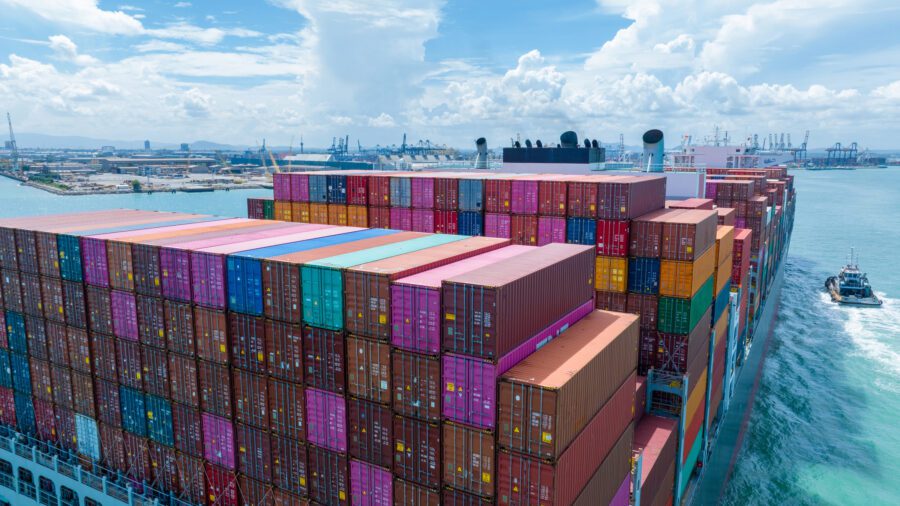
Navigating the intricate web of today’s global supply chain is akin to steering through a maze of potential disruptions. These pose significant challenges for businesses, threatening operational continuity and profitability. However, amidst this complexity, predictive analytics emerges as a beacon of hope, offering proactive solutions to anticipate and mitigate supply chain disruptions before they escalate.
Integration of AI and machine learning in predictive analytics
Predictive analytics in supply chain management leverages AI and machine learning to process vast amounts of data and generate actionable insights. Machine learning algorithms — such as regression analysis, time-series forecasting and neural networks — are pivotal in enhancing predictive accuracy. By continuously learning from historical data and adapting to new patterns, these algorithms can predict demand fluctuations, supplier performance and potential disruptions with high precision.
Moreover, AI-driven anomaly detection systems can identify irregularities in real time, such as unexpected delays or quality issues in the supply chain. These systems use advanced pattern recognition to alert staff of potential problems before they escalate, allowing for timely interventions. Integrating AI and machine learning into predictive analytics improves forecasting accuracy and enhances supply chains’ overall agility and resilience.
What predictive analytics can do for the supply chain
Predictive analytics originated in the 1940s with weather data analysis and has significantly evolved over the decades, extending its applications to industries such as health, technology and retail. Explore these eight specific ways it tackles supply chain disruptions and challenges.
1. Demand forecasting precision
Predictive analytics harnesses historical data and market insights to forecast product demand accurately. Brands can predict future demand patterns by analyzing past trends and external factors, enabling precise inventory management and production planning. This capability ensures optimized resource allocation and minimizes the risk of stockouts or excess inventory during disruptions.
2. Agile pricing strategies
During disruptions, market dynamics can fluctuate unpredictably. Predictive analytics monitors market conditions, competitor pricing and consumer behavior in real time, enabling companies to adjust pricing strategies dynamically. Capabilities for adaptive pricing mean maximizing profitability while maintaining competitiveness in volatile markets. Additionally, analytics-driven insights into price elasticity help enterprises optimize pricing strategies for sustained growth and customer satisfaction.
3. Proactive risk management
Advanced analytics models evaluate supply chain vulnerabilities, from supplier reliability to geopolitical risks and transportation challenges. Continuously monitoring real-time data streams and leveraging machine learning algorithms can help businesses identify potential disruptions early. They are then empowered to implement contingency plans, diversify sourcing strategies and secure alternative logistics routes, effectively mitigating risks.
4. Optimized inventory control
Predictive analytics optimizes inventory control by forecasting lead times, supplier performance and market demand fluctuations. Firms can maintain optimal inventory levels by integrating data from suppliers, warehouses and sales channels. This strategic approach minimizes carrying costs and ensures seamless supply chain operations, even amidst sudden demand surges or supply chain bottlenecks.
5. Enhanced operational efficiency
Analytics-driven insights identify inefficiencies within supply chain operations, such as production delays or logistical bottlenecks. When anomalies are detected early and performance metrics are analyzed, organizations can optimize resource allocation and improve overall operational efficiency. Downtime is minimized, and brands can ensure seamless customer fulfillment even during disruptions.
6. Improving fleet efficiency through real-time tracking
Another crucial application of predictive analytics in supply chain management is improving fleet efficiency through real-time tracking. Leveraging GPS-based systems and IoT devices, businesses can monitor the location and condition of their fleet in real time. Predictive analytics processes this data to optimize routes, reduce fuel consumption and preemptively identify maintenance needs.
For instance, by analyzing historical traffic patterns, weather conditions and delivery schedules, predictive models can suggest the most efficient routes, avoiding delays and reducing fuel spending. Real-time tracking also enables decision-makers to monitor driver behavior, which helps ensure compliance with safety regulations and identify areas for improvement.
Predictive maintenance powered by real-time tracking data helps prevent unexpected breakdowns. With vehicle performance data — such as engine temperature, oil levels and tire pressure — on hand, predictive analytics can forecast potential issues before they become critical.
7. Building resilience through simulation
To enhance supply chain resilience, predictive analytics enables risk or stress scenario modeling and response simulation. By doing so, enterprises can develop robust contingency plans, which foster agility and the capability to adapt strategies swiftly and strengthen supplier relationships.
8. Continuous improvement and adaptation
Leveraging predictive analytics facilitates continuous improvement by identifying opportunities for optimization across the supply chain. By monitoring KPIs and other performance metrics, businesses gain actionable insights to refine strategies and enhance decision-making. This data-driven approach strengthens operational resilience and fosters innovation and sustainable growth in dynamic market environments.
Future-proofing supply chains with predictive precision
Incorporating predictive analytics into supply chain strategies is more than a response to disruptions — it’s a proactive investment in sustainable growth through safeguarding operations and enhancing customer satisfaction. Aside from helping organizations weather challenges, continuously refining and leveraging real-time insights can also help them seize opportunities for innovation and market leadership.
